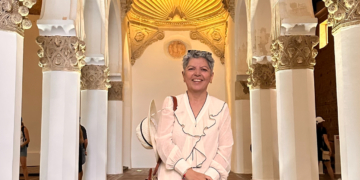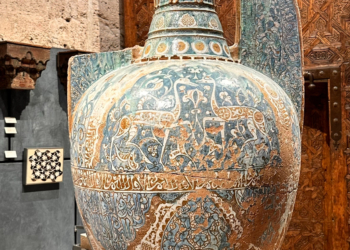There are many beautiful carvings: of Durga, Mahishasuramardini, Gajalakshmi seated in a lotus pool, Shiva as Ardhanari and Virbhadra, Ravana shaking the Kailash parvat, and the Mahabharata and Ramayana panels

According to a legend cited in the 10th century book Katha Kalpa Taru, some time in the 8th century, the queen of the Rashtrakuta ruler Elu made a vow that she would not eat till a magnificent temple was built to Lord Shiva, and she saw its amlaka (finial). The king invited many architects, but none of them was able to fulfil this vow. Finally, an architect named Kokasa from Paithan completed the task in no time. This story is narrated by M.K. Dhavalikar in Ellora: Monumental Legacy.

Legend aside, the construction of the temple began during the rule of the Rashtrakuta king, Dantidurga (735-757 AD). A group of skilled artisans cut and carved the vertical face of the basalt rock of a hill in Elapura, known today as Ellora, near Aurangabad. Unlike the Buddhists who made carvings inside the rock to construct cave temples, this group cut the rock internally and externally, with exquisite precision, to build a monolithic rock temple.  The result is the magnificent Kailasa temple, one of the largest rock-cut temples in the world. Major work on the temple was done by King Dantidurga’s successor, Krishna I (757-773 AD), although work continued under many successive kings for more than a century.
The result is the magnificent Kailasa temple, one of the largest rock-cut temples in the world. Major work on the temple was done by King Dantidurga’s successor, Krishna I (757-773 AD), although work continued under many successive kings for more than a century.
There are 32 caves in Ellora, numbered according to their age. Temples 1 to 12 in the southern side are the Buddhist caves. Temples 13 to 29 are the Hindu caves, and in the northern side are the Jain temples. I knew that if I started at cave 16, the Kailasa temple, I would never see the rest. So, keeping it as a treat for myself, I started at cave 32.
The first thing I saw when I finally reached cave 16 was a huge rock screen with carvings and a two-level doorway with eaves on top. A door on the lower level leads into the double-storey gopuram, which has exquisitely carved sculptures on the walls. Goddesses Ganga and Yamuna flank the entrance gateway.
The gopuram at the lower level leads to the portico. The full glory of this colossal monolith hits you when you leave the portico, on either side of which are the north and south courts with life-size elephants and a victory pillar framing the Kailasa. It is this iconic image that I had seen many times in photographs.
There are five subsidiary shrines around the main temple in the circumambulatory path that runs along the side of the hill. This includes a shrine dedicated to river goddesses Ganga, Yamuna and Saraswati, and a yajna-shala (hall of sacrifice).
However, the main temple is the most impressive. The elephants and lions that form the high plinth of the main temple signify Rashtrakuta power and prosperity. Rock steps in the left court lead up to the top where Nandi and a 36-column mandap with a Shiv ling are located. There are many beautiful carvings: of Durga, Mahishasuramardini, Gajalakshmi seated in a lotus pool, Shiva as Ardhanari and Virbhadra, Ravana shaking the Kailash parvat, and the Mahabharata and Ramayana panels. After spending many hours looking at these perfections, I climbed up to the top of the mountain from which the temple is carved. You can see the whole complex from there.
The carving of the temple started from the top of the mountain but a pit was later dug around the temple on the sloping side of the hill, about 106 feet deep at its innermost side, 160 ft wide and 280 ft in length. The temple stands in the middle of this pit. Its highest point is the shikhar at 96 ft.

Apart from the gopura, the main temple has a sabha griha (hall), vestibules and a Nandi mandapwhich leads to the garba griha (sanctum) with the Shiv linga, all of which are profusely carved and with Dravidian shikharas (towers). A bridge connects the Nandi mandap to the gopuram.
The stiff climb up the hill was made worthwhile by the loveliness of the lotus on the roof of the sanctum. The lotus is crowned by a finial with four mythical lions, each facing one cardinal direction. Looking at the magnificence of the temple, I wondered: Was all this made using just a hammer and a chisel or was there a divine force at work too?

























